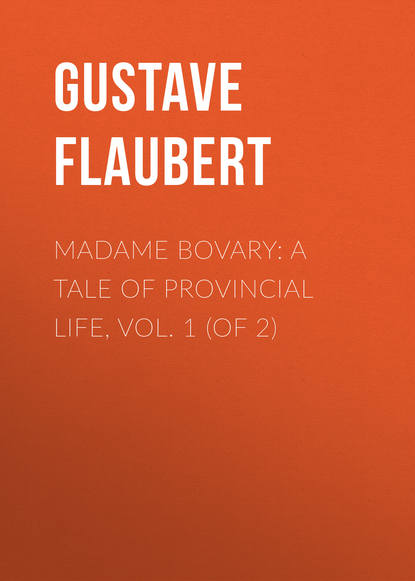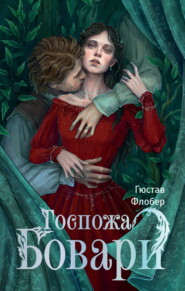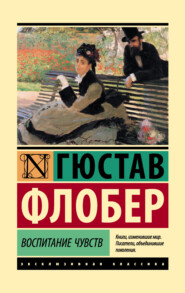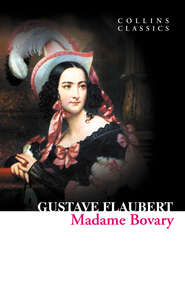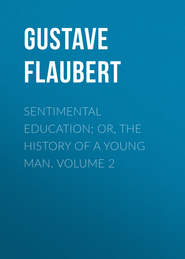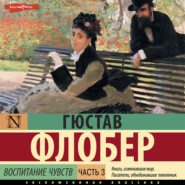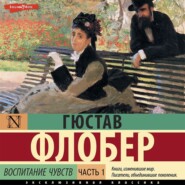По всем вопросам обращайтесь на: info@litportal.ru
(©) 2003-2024.
✖
Madame Bovary: A Tale of Provincial Life, Vol. 1 (of 2)
Настройки чтения
Размер шрифта
Высота строк
Поля
Flaubert's fame dates from Madame Bovary, which was much discussed by press and public. Many, including his friend, Maxime Ducamp, condemned it, but Sainte-Beuve gave it his decisive and courageous approval. It was generally considered, however, as the starting point of a new phase in letters, frankly realistic, and intent on understanding and expressing everything. Such success might have influenced Flaubert's artistic inclinations but did not, for while Madame Bovary was appearing in the Revue de Paris, the Artiste was publishing fragments of La Tentation de Saint Antoine.
In 1858 Flaubert went to Tunis, visited the site of ancient Carthage, and four years afterwards wrote Salammbô, a marvellous reconstitution, more than half intuitive, of a civilisation practically unrecorded in history. This extraordinary book did not call forth the enthusiasm that greeted Madame Bovary. Flaubert, in whom correctness of detail was a passion, was condemned, even by Sainte-Beuve, for choosing from all history a civilisation of which so little is known. The author replied, and a lengthy controversy ensued, but it was not a subject that could be settled definitely in one way or another.
In L'Education Sentimentale, roman d'un jeune homme, published in 1869, Flaubert returns momentarily to the style which brought him such rapid and deserved celebrity. In 1877 appeared Trois Contes, three short stories written in the impersonal style of Salammbô, contrasting strangely with La Legende de Saint Julien l'Hospitalier and Herodias, wherein Flaubert shows himself supreme in the art of word-painting.
Death came to him on May 8, 1880, as he was writing the last chapters of a new work, Bouvard et Pecuchet, which was published in part after he died and later appeared in book form (1881).
At the age of twenty-five, Flaubert met the only woman who in any way entered his sentimental life. She was an author, the wife of Lucien Colet, and the "Madame X" of the Correspondence. Their friendship lasted eight years and ended unpleasantly, Flaubert being too absorbed by his worship for art to let passion sway him.
He remained unmarried because his love for his mother and family made calls upon him that he would not neglect. He was indifferent to women, treated them with paternal indulgence, and often avowed that "woman is the undoing of the just." Yet a warm friendship existed between him and George Sand, and many of his letters are addressed to her, touching upon various questions in art, literature, and politics.
The misanthropy which haunted Flaubert, of which so much has been said, was not innate, but was acquired through the constant contemplation of human folly. It was natural for him to be cheerful and kind-hearted, and of his generosity and disinterestedness not enough can be said. At the close of his life financial difficulties assailed him, for he had given a great part of his fortune to the support of a niece, restricting his own expenses and living as modestly as possible. In 1879, M. Jules Ferry, then Minister of Public Instruction, offered him a place in the Bibliothèque Mazarine, but the appointment was not confirmed.
Flaubert's method of production was slow and laborious. Sometimes weeks were required to write a few pages, for he accumulated masses of notes and, it must be said, so much erudition as at times to impede action. He thought no toil too great, did it but aid him in his pursuit of literary perfection, and when the work that called for such expenditure of strength and thought was finished, he looked for no reward save that of a satisfied soul. Alien to business wisdom, he believed that to set a price upon his work disparaged it.
In Flaubert, a Romanticist and a Naturalist at first were blended. But the latter tendency was fostered and acknowledged, while the former was repressed. He was an ardent advocate of the impersonal in art, declaring that an author should not in a page, a line, or a word, express the smallest part of an opinion. To him a writer was a mirror, but a mirror that reflected life while adding that divine effulgence which is Art. Of him a French Romanticist still living says:
"Imagination was espoused by Unremitting-Toil-in-Faith and bore Flaubert. France fed the child, but Art stepped in and gave him to the Nations as a Beacon for the worshippers of Truth-in-Letters-and-in-Life."
The city of Rouen reared a monument to Flaubert's memory, but on the spot where he breathed his last are reared the chimneys and the buildings of a factory, a tribute – possibly unconscious – to reality in life.
Before writing Madame Bovary Flaubert had tested himself, and an idea of the scope and variety of his ideas may be gained from the following list of inedited and unfinished fragments:
HISTORICAL
The Death of the Due de Guise, 1835
Norman Chronicle of the Tenth Century, 1836
Two Hands on a Crown, or, During the Fifteenth Century, 1836.
Essay on the Struggle between Priesthood and Empire, 1838.
Rome and the Cæsars, 1839.
TRAVELS
Various notes on Travels to the Pyrenean Mountains, Corsica, Spain and the Orient, from 1840 to 1850.
TALES AND NOVELS
The Plague in Florence, 1836
Rage and Impotence, 1836
The Society Woman, fantastic verses, 1836
Bibliomania, 1836
An Exquisite Perfume, or, The Buffoons, 1836.
Dreams of the Infernal Regions, 1837
Passion and Chastity, 1837
The Funeral of Dr. Mathurin, or, During the XVth Century, 1839.
Frenzy and Death, 1843
Sentimental Education (not the novel published under same title). 1843.
PLAYS
Louis XI, Drama, 1838
Discovery of Vaccination, a parody of tragic style; one act only was written.
CRITICISMS
On Romantic Literature in France
MISCELLANY
Quidquid volueris? A psychological study, 1837.
Agony (Sceptical Thoughts), 1838
Art and Commerce, 1839.
Several nameless sketches.
Unfortunately, nearly all the works of Flaubert's youth were mere sketches, laid aside by him. Their publication would have added nothing to his fame. Still, the loss of some would have been deplorable, to wit, such gems as Novembre, The Dance of Death, Rabelais, and the travels, Over Strand and Field. These sketches will be found in this edition.
MADAME BOVARY
PART I
I.
The New Boy
WE WERE in class when the head-master came in, followed by a "new fellow," not wearing the school uniform, and a school servant carrying a large desk. Those who had been asleep woke up, and every one rose as if just surprised at his work.
The head-master made a sign to us to sit down. Then, turning to the class-master, he said to him in a low voice:
"Monsieur Roger, here is a pupil whom I recommend to your care; he'll be in the second. If his work and conduct are satisfactory, he will go into one of the upper classes, as becomes his age."
The "new fellow," standing in the corner behind the door so that he could hardly be seen, was a country lad of about fifteen, and taller than any of us. His hair was cut square on his forehead like a village chorister's; he looked reliable, but very ill at ease. Although he was not broad-shouldered, his short school jacket of green cloth with black buttons must have been tight about the armholes, and showed at the opening of the cuffs red wrists accustomed to being bare. His legs, in blue stockings, looked out from beneath yellow trousers, drawn tight by braces. He wore stout, ill-cleaned, hobnailed boots.
In 1858 Flaubert went to Tunis, visited the site of ancient Carthage, and four years afterwards wrote Salammbô, a marvellous reconstitution, more than half intuitive, of a civilisation practically unrecorded in history. This extraordinary book did not call forth the enthusiasm that greeted Madame Bovary. Flaubert, in whom correctness of detail was a passion, was condemned, even by Sainte-Beuve, for choosing from all history a civilisation of which so little is known. The author replied, and a lengthy controversy ensued, but it was not a subject that could be settled definitely in one way or another.
In L'Education Sentimentale, roman d'un jeune homme, published in 1869, Flaubert returns momentarily to the style which brought him such rapid and deserved celebrity. In 1877 appeared Trois Contes, three short stories written in the impersonal style of Salammbô, contrasting strangely with La Legende de Saint Julien l'Hospitalier and Herodias, wherein Flaubert shows himself supreme in the art of word-painting.
Death came to him on May 8, 1880, as he was writing the last chapters of a new work, Bouvard et Pecuchet, which was published in part after he died and later appeared in book form (1881).
At the age of twenty-five, Flaubert met the only woman who in any way entered his sentimental life. She was an author, the wife of Lucien Colet, and the "Madame X" of the Correspondence. Their friendship lasted eight years and ended unpleasantly, Flaubert being too absorbed by his worship for art to let passion sway him.
He remained unmarried because his love for his mother and family made calls upon him that he would not neglect. He was indifferent to women, treated them with paternal indulgence, and often avowed that "woman is the undoing of the just." Yet a warm friendship existed between him and George Sand, and many of his letters are addressed to her, touching upon various questions in art, literature, and politics.
The misanthropy which haunted Flaubert, of which so much has been said, was not innate, but was acquired through the constant contemplation of human folly. It was natural for him to be cheerful and kind-hearted, and of his generosity and disinterestedness not enough can be said. At the close of his life financial difficulties assailed him, for he had given a great part of his fortune to the support of a niece, restricting his own expenses and living as modestly as possible. In 1879, M. Jules Ferry, then Minister of Public Instruction, offered him a place in the Bibliothèque Mazarine, but the appointment was not confirmed.
Flaubert's method of production was slow and laborious. Sometimes weeks were required to write a few pages, for he accumulated masses of notes and, it must be said, so much erudition as at times to impede action. He thought no toil too great, did it but aid him in his pursuit of literary perfection, and when the work that called for such expenditure of strength and thought was finished, he looked for no reward save that of a satisfied soul. Alien to business wisdom, he believed that to set a price upon his work disparaged it.
In Flaubert, a Romanticist and a Naturalist at first were blended. But the latter tendency was fostered and acknowledged, while the former was repressed. He was an ardent advocate of the impersonal in art, declaring that an author should not in a page, a line, or a word, express the smallest part of an opinion. To him a writer was a mirror, but a mirror that reflected life while adding that divine effulgence which is Art. Of him a French Romanticist still living says:
"Imagination was espoused by Unremitting-Toil-in-Faith and bore Flaubert. France fed the child, but Art stepped in and gave him to the Nations as a Beacon for the worshippers of Truth-in-Letters-and-in-Life."
The city of Rouen reared a monument to Flaubert's memory, but on the spot where he breathed his last are reared the chimneys and the buildings of a factory, a tribute – possibly unconscious – to reality in life.
Before writing Madame Bovary Flaubert had tested himself, and an idea of the scope and variety of his ideas may be gained from the following list of inedited and unfinished fragments:
HISTORICAL
The Death of the Due de Guise, 1835
Norman Chronicle of the Tenth Century, 1836
Two Hands on a Crown, or, During the Fifteenth Century, 1836.
Essay on the Struggle between Priesthood and Empire, 1838.
Rome and the Cæsars, 1839.
TRAVELS
Various notes on Travels to the Pyrenean Mountains, Corsica, Spain and the Orient, from 1840 to 1850.
TALES AND NOVELS
The Plague in Florence, 1836
Rage and Impotence, 1836
The Society Woman, fantastic verses, 1836
Bibliomania, 1836
An Exquisite Perfume, or, The Buffoons, 1836.
Dreams of the Infernal Regions, 1837
Passion and Chastity, 1837
The Funeral of Dr. Mathurin, or, During the XVth Century, 1839.
Frenzy and Death, 1843
Sentimental Education (not the novel published under same title). 1843.
PLAYS
Louis XI, Drama, 1838
Discovery of Vaccination, a parody of tragic style; one act only was written.
CRITICISMS
On Romantic Literature in France
MISCELLANY
Quidquid volueris? A psychological study, 1837.
Agony (Sceptical Thoughts), 1838
Art and Commerce, 1839.
Several nameless sketches.
Unfortunately, nearly all the works of Flaubert's youth were mere sketches, laid aside by him. Their publication would have added nothing to his fame. Still, the loss of some would have been deplorable, to wit, such gems as Novembre, The Dance of Death, Rabelais, and the travels, Over Strand and Field. These sketches will be found in this edition.
MADAME BOVARY
PART I
I.
The New Boy
WE WERE in class when the head-master came in, followed by a "new fellow," not wearing the school uniform, and a school servant carrying a large desk. Those who had been asleep woke up, and every one rose as if just surprised at his work.
The head-master made a sign to us to sit down. Then, turning to the class-master, he said to him in a low voice:
"Monsieur Roger, here is a pupil whom I recommend to your care; he'll be in the second. If his work and conduct are satisfactory, he will go into one of the upper classes, as becomes his age."
The "new fellow," standing in the corner behind the door so that he could hardly be seen, was a country lad of about fifteen, and taller than any of us. His hair was cut square on his forehead like a village chorister's; he looked reliable, but very ill at ease. Although he was not broad-shouldered, his short school jacket of green cloth with black buttons must have been tight about the armholes, and showed at the opening of the cuffs red wrists accustomed to being bare. His legs, in blue stockings, looked out from beneath yellow trousers, drawn tight by braces. He wore stout, ill-cleaned, hobnailed boots.





